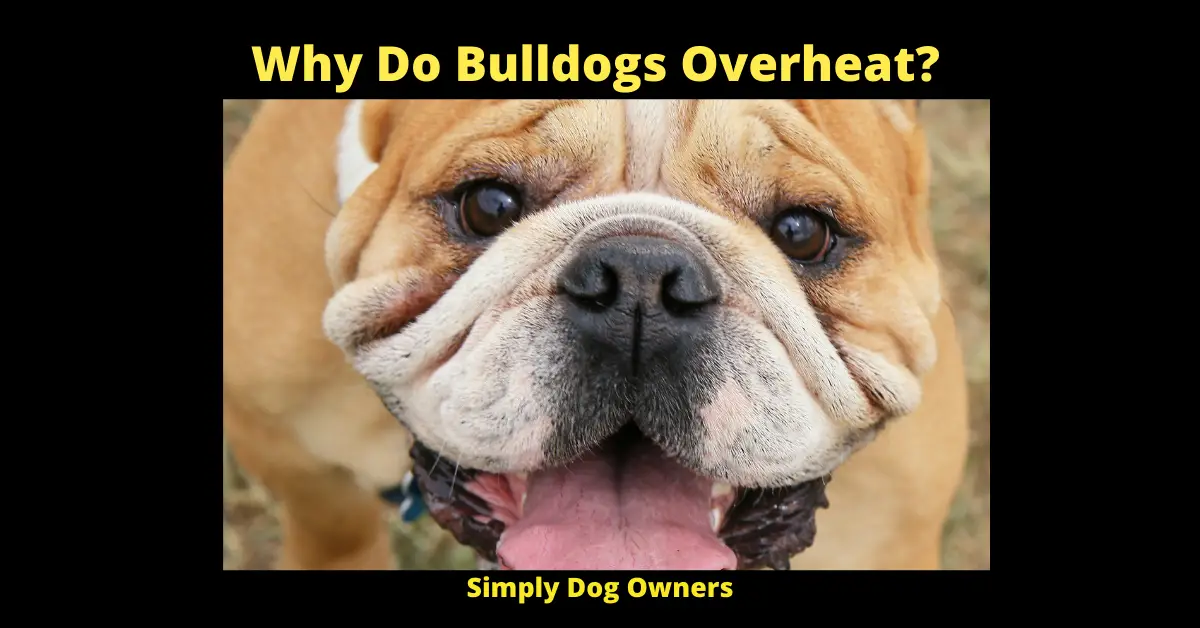Why do Bulldogs Overheat?
Why Do Bulldogs Overheat? Bulldogs are a special breed in several ways, but one of the more notable traits is their overheating tendency. When the summer months approach, it’s essential to learn how to keep your dog safe and comfortable in the heat.
When a dog’s body temperature is increased to 40.5C or above, it becomes overheated and suffers heatstroke. Elderly, sick, pregnant female Bulldogs and overweight dogs are also at risk.
Temperature, fatigue, orientation dysfunction, trouble turning your eyes while seeing moving objects, and a slow or non-responsive reaction to commands are also signs that your Bulldog is overheating: the dog sneezes, and the color of the whites of its eyes shifts.
Gingival membranes often transform a pale or dark red hue. The heartbeat of Bulldog becomes thready. In cases of extreme overheating, heat stroke (pupils that respond to light), or coma, the Bulldog will become unconscious (pupils fixed to light).
Overheating of English Bulldogs leads to physiologic dysfunction of the internal organs. It’s even likely to die of heart disease. It’s crucial to understand that the effects of English Bulldog heatstroke will only be diagnosed after the animal has been confirmed to have overheated. The problem is that other illnesses exhibit identical signs and symptoms. As a result, before pursuing emergency action, the owner must be certain that heatstroke is the cause of the deterioration.
When a Bulldog becomes overheated, it is essential to return its body temperature to normal (39.0-39.5°C) as quickly as possible (within 30 min. – 1 hour). Bring the dog to a comfortable location and wet its hair with cool spray or bags, cool armpits, and hips’ inner sides. The most important thing is not to overcool the dog while lowering its temperature. Bulldog often needs a lot of fresh air inflow.
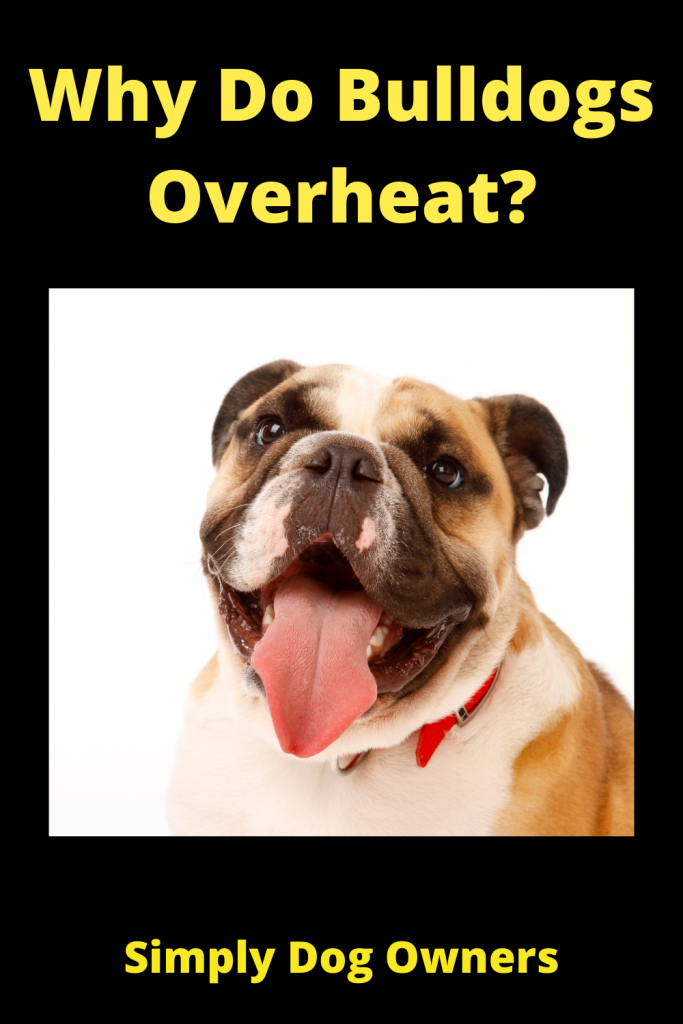
Remember to contact a veterinarian right away if you do all of these things since even minor overheating can trigger problems. In certain situations, the effects of overheating can be permanent, which is why you can see or contact your veterinarian right away.
The only cure is prevention.
Bulldog heatstroke in hot temperatures, as you can see, is very harmful to the dog’s welfare. If you follow the safety advice and pay close attention to your Bulldog’s wellbeing, you would be able to safely shield your pet from the adverse effects of high temperatures.
Ways to Prevent Overheating in Your Bulldog
Heat and sultry weather irritate English Bulldogs. The body temperature of a bulldog is greater, and its cooling mechanism is less powerful than that of a person. Since temperature is controlled by the nose, tongue, mouth, and paws, Bulldogs get overheated more quickly than humans, putting them at risk of heatstroke. Bulldog’s welfare, and perhaps his survival, is in grave danger.
Avoid Walking in Direct Sun.
In hot weather, avoid or limit regular walks. Early in the morning or late in the evening, or at night are the best times to walk. If you take Bulldog out in the afternoon, keep the stroll to 10-15 minutes in the shade.
Bulldogs of cardiac failure, asthma, epilepsy, obesity, gastrointestinal, infectious, and other dangerous illnesses, pregnant females, senior dogs, and puppies younger than six months should be kept out of the heat as much as necessary.
Limit Physical Exercising.
On hot and slack days, don’t force your Bulldog to jump or drive. If your Bulldog has to participate in activities and training exercises that can’t be canceled, reschedule them for the morning or evening and lower the volume. On very hot days, switch the workouts to swimming. It’s a great heat to load up and cool off.
Stay in the shade.
When you’re outside, stay away from open spaces and overt sunshine. Bulldog can never be tied in the sun. If you must be exposed to the sun, bring plenty of sunscreens, a sunshade, a sun-protection hat, a unique cooling collar, and a body-cloth.
Don’t leave Bulldog in a small place at home.
Avoid confining the dog in a small space without allowing fresh air to circulate if you don’t have air conditioning; open windows and interior doors from the shadow side if at all necessary. Your Bulldog should be able to move around the apartment freely. It would help if you even kept a bathroom door open since many Bulldogs like lying on the cool floor.
To lower the room temperature, hang a wet towel and guide the fan’s airflow to it. Just make sure Bulldog isn’t lying in a draft or directly under the air conditioner or fan.
Install a cooling rug under your English Bulldog’s room or build one from frozen plastic bags or tiny bottles. Place them by the puppy, wrapped in a towel.
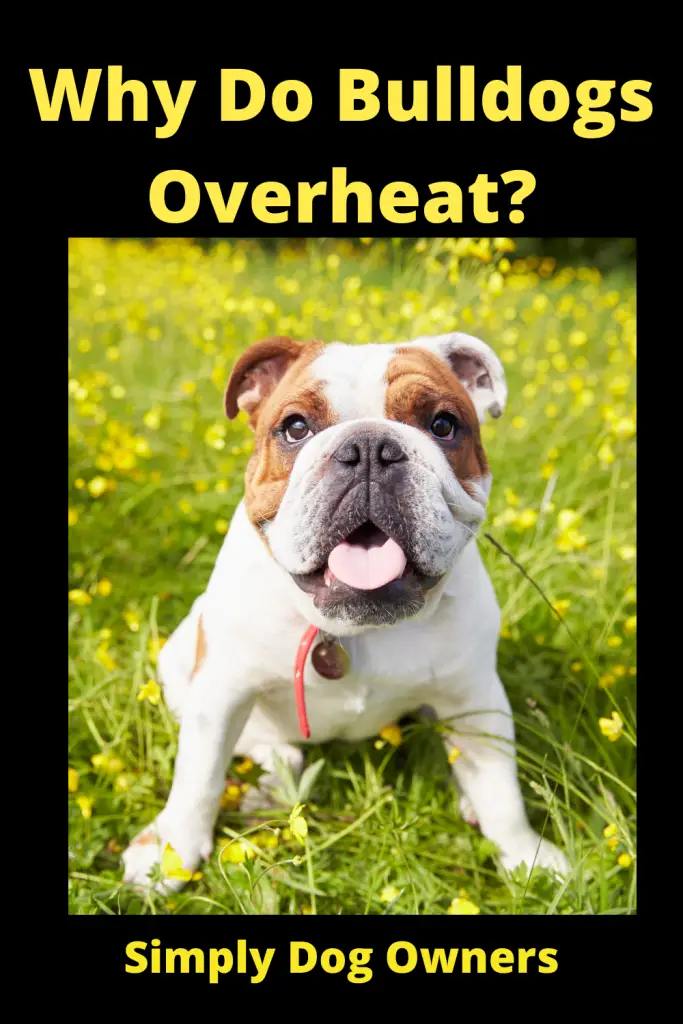
Give More water for drinking and cooling.
In the heat, Bulldogs need more water. Water should be available at all times for your dog. Ensure your English Bulldog’s water bowl is always full; change the water more frequently to keep it cool and add an ice cube. Take a long walk or a car trip with your dog’s water bottle. Cool water should be applied to Bulldog’s paws, head, and belly if it is overheating. Bulldog’s ears should be wiped inside with a wet cloth.
If Bulldog can swim or walk in water, that would be ideal. However, do not force the dog into the water! If your English Bulldog doesn’t like to swim and there isn’t a water pond nearby, you can spray, hose (under low pressure), or douche it with water. If you live in the country, a small pool outside is a good idea; your Bulldog will enjoy splashing around in it when he needs to cool off.
Change English Bulldog Nutrition.
Exclude fatty and junk foods from English Bulldog nutrition in the heat because digestion requires energy. It’s usual if your Bully declines to eat or feeds reluctantly after morning. Don’t think about forcing your Bully to eat; limit the amount of food and meals. Adult Bulldog should be switched to a sour-milk diet (provided that there are no contraindications or human intolerance) or to one-time feeding.
Take care when you are going to Travel.
When traveling by car with your Bulldog, keep in mind that the sun shines brightest through the back window. Consequently, please take the appropriate precautions to keep the English Bulldog from overheating, spraying it with water, and using a cooling collar. Allowing the Bulldog to stick its head out of an open window can cause conjunctivitis, which can be dangerous. If a journey is long, stop each 2-3 hours so that the dog may walk and drink.
Never leave your Bulldog in the Car!
Even though this seems to be a well-known caution, many more dogs die of heatstroke in parking cars than was previously thought. And if you park the car in the shade and crack the backdoor, the dog would be at risk. The vehicle’s interior heats up to dangerous levels quite fast, within minutes – even a brief absence may be deadly.
Think twice before flying with Bulldog in hot and humid conditions. Being in a locked container in the luggage compartment may be risky for your cat for an extended period.
Do not use a dog muzzle that is so tight. With such a muzzle on, it’s simple to get heatstroke. If your Bulldog has a mask, pick one that is well ventilated and secure. Do not cinch the collar. In the season, go for a light-weighted collar or harness.
Protect Bulldog’s Nose and Paws.
Keep in mind that the genitals, inner surface of the ears, and nose have sensitive skin that can burn quickly in the light. And if the Bulldog tries to lay in the heat, as soon as it begins panting, transfer it to the shade. Avoid walking the dog on pavements during the midday heat since this will trigger paw burn. At the beach, be cautious. If the sand or pebble is too hard for you to step on, the Bully’s hands will quickly get burned.
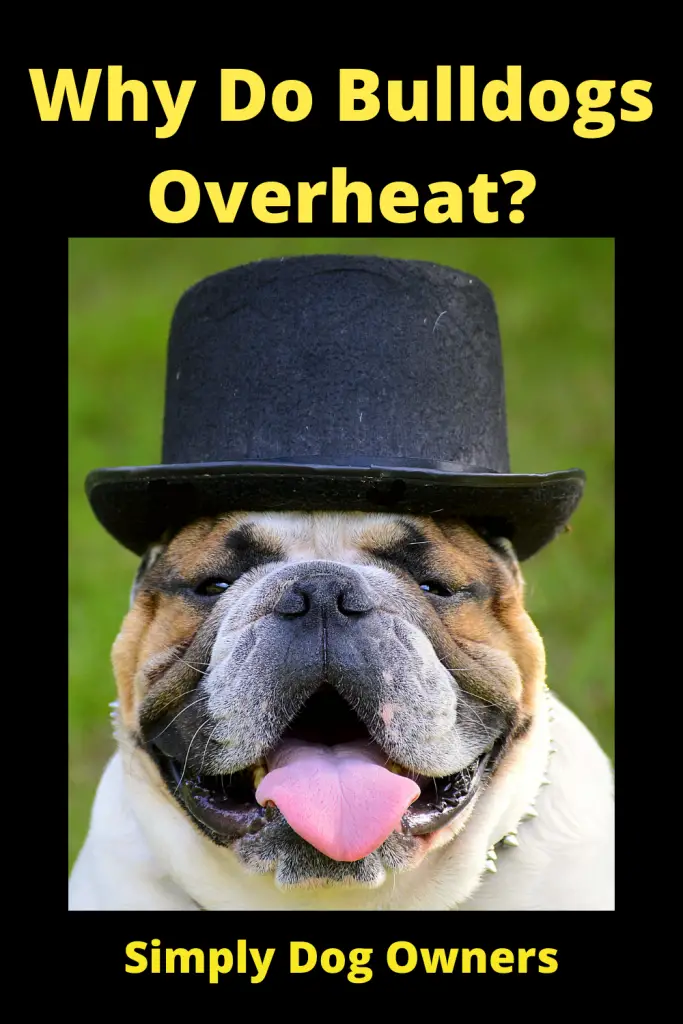
Watch your Bulldog’s Coat.
Use dog flea and tick repellents – insect sting scratches are easily infected and take a long time to heal in the heat. Because shedding is more likely in hot weather, use a dog slicker or brush your dog more frequently.
How do you cool down an Overheated Dog?
Heat Stroke will affect any Bulldog, regardless of their ability to breathe or how active they are. If it’s appropriate, take the temperature of the pet rectally. Temperatures of 101-102 degrees Fahrenheit are considered natural. Heatstroke is most often diagnosed with a body temperature of 104 degrees or above. Place your pet in a pool of cold running water or spray them with a hose, making sure the cool water comes into contact with their skin and does not drip off their coat. Wet the insides of the legs and the abdomen. Apply an ice pad to the back of the neck and the front leg pits under challenging situations. To determine when to avoid cooling, take a rectal temperature if necessary. To prevent the cooling mechanism, keep the temperature below 103 degrees.
The First Symptoms of Heat Exhaustion in Bulldog are:
- Excessive panting
- the skin on the inside of the ears becomes flushed and red.
Heat Exhaustion can progress into Heat Stroke, as indicated by:
- Weakness
- Staggering
- Fainting – loss of consciousness Heat stroke is an emergency.
If your dog is showing signs of heatstroke, you must act quickly to cool him down. Don’t put off getting medication by a veterinarian. Heat Stroke is a Medical Emergency; Treat the Dog Immediately! Attempting to force your dog to drink is not a good idea. Any liquid he consumes may be regurgitated and possibly aspirated into his lungs due to his swollen airways.
If a dog’s temperature is 105 degrees or higher, rub a piece of ice on his tongue for 10 seconds and then remove it. He was using comfortable, not icy, water, hose down the puppy. Apply an ice pack to the dog’s body, as well as soaked towels or any other type of fabric.
Get him into a tub having cool water if at all possible — cool, not cold! However, if freezing is all that is available in an emergency, use it. If nothing else works, a cool water enema can help the dog cool down internally. If you induce your dog too quickly or with a water cooler than a few degrees below body temperature, you risk putting him in severe shock. Your dog’s airways are swelling as he pants, causing him to pant even harder.
This loop must be broken. Allergy Treatment for children Benadryl should be taken by mouth using a dropper. For the exact dose, consult your veterinarian ahead of time, or call if appropriate. Much better, have a stock of injectable Benadryl to have it on hand. Do not quit treating the dog before his body temperature drops to 103 degrees Fahrenheit. Transport the dog to the veterinarian as soon as the dog’s internal temperature has settled at a near-normal stage. Heatstroke may have long-term consequences.
How Do I keep my Bulldog Cool in the Summer?
It’s just about enjoying a good time during the summer. When temperatures rise to dangerous levels, pet treatment should take precedence. With good hydration and environmental management, dogs can generally withstand the heat of the summer months. Other susceptible dogs, such as the English Bulldog, have a more challenging time regulating their body temperatures. Your Bulldog must be kept calm while the temperature increases.
So, how can you keep a summer English bulldog cool? Because of their body shape and the fact that they are a brachycephalic breed with a shorter snout, English bulldogs are prone to overheating. English bulldogs can meet these guidelines to keep calm throughout the hot summer months:
- Well-hydrated
- Avoid physical exertion in extreme heat.
- Rest in a temperature-controlled space
- Use fans or misters to cool down.
- Provide frozen treats.
In the summer, English bulldogs and other breeds with small snouts are more vulnerable to overheating. Heat exhaustion in English Bulldogs can not be underestimated since it can be lethal.
Threats Your Bulldog Faces in the Summer
Sunburns
Yes, your dog can get sunburned as well! A bulldog’s nose and eyes are susceptible to the sun’s harmful rays. While sunburn is merely irritating, it can lead to more severe problems if left untreated. Bulldogs, like humans, are prone to picking and scratching itchy and stingy areas.
On the other hand, bulldogs have sharp nails that can scratch or even cut an eye or nose deeply. If sunburns are left untreated for too long, they can become red and infected. Skin infection in your dog will do more than irritate them. In severe cases, it can cause vomiting, diarrhea, and a variety of other issues.
Here are a Few Tips to Help your Dog Combat the Harmful Effects of the Sun.
Don’t put the dog outside unattended. This is the most critical guideline for bulldogs to follow. Your dog will get ill if you leave him outdoors all day! Bear in mind the dangers of the sun, and keep an eye on your dog.
Ascertain if you have a shady relaxing place. It’s cool to crash under a shade tree or umbrella after a day of sun. Your dog will enjoy the rest and will be able to recover more quickly in the shade.
Apply a small amount of dog-safe sunscreen to the dog’s nose and under his paws. Burning is unpleasant, but it is unavoidable when exposed to the sun. Try adding a dog-safe sunscreen on your dog’s most vulnerable places to minimize the chance of him being sunburned. You’ll both be happy you did, I promise!
When it gets hot outdoors, though, sunburns aren’t the only problem to be concerned with. Often, keep an eye out for allergies that could hurt your dog.
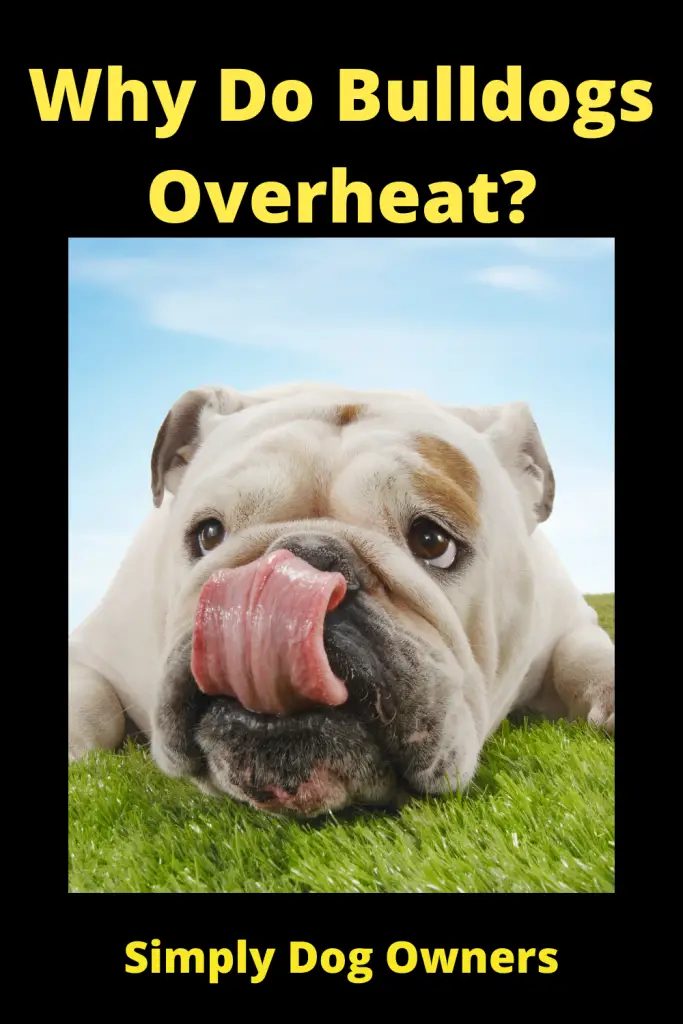
Allergies
Summer isn’t all the scorching temperatures and friendly pool parties; it’s even allergy season. Most people are too preoccupied with their allergies to notice that their dog might be experiencing the same symptoms.
Pollen allergies are most common in English bulldogs. If you don’t keep an eye on your dog, they could develop sneezing, itching, watery eyes, and a variety of other annoying symptoms. Here are few items you should do to support your Bulldog whether he or she is suffering from some of the above illnesses.
- Keep the dog’s muzzle tidy and clear of boogers and eye gunk. This will infect your Bulldog and cause him damage.
Get the canine allergy prescription. And, it does happen. They can usually be bought at every major pet shop, but they can also be purchased online or at a veterinarian’s clinic.
- If your dog seems to be critically sick, take them to the clinic for a more thorough inspection.
If you keep an eye on your puppy, you’ll be able to say if he or she is suffering from allergies. Allergies usually are not dangerous until they have been ignored for a long time.
English Bulldog Heat Stroke Symptoms
Your overheated English Bulldog can suffer severe damage to their heart, liver brain, and nervous system in a short period. Symptoms of overheating in English Bulldogs include:
- Dark, dry, and pale gums
- Abnormal breathing
- Glazed eyes
- Unconsciousness or fainting
- Excessive lethargy
- Heaving while panting
- Loose and a discolored tongue
- Throat gurgling
- Diarrhea, vomiting, and possibly rectal bleeding
- Excessive drooling
What Temperature is too Hot for English Bulldog?
The body temperature of English bulldogs should be 98 degrees Fahrenheit. Every temperature that is hotter or colder than this should be treated with caution and, if persistent, a ride to the veterinarian. If held indoors and away from the weather, bulldogs will safely retain this temperature.
How to Treat a Bulldog with Heat Stroke
Bulldogs aren’t as good at releasing heat as we are; they’re made to store rather than emit heat, so they get hotter quicker. As a result, we might be unaware that a bulldog has been overheated before signs appear unexpectedly. Heatstroke in bulldogs is a hazardous illness that may develop suddenly and quickly escalate into an emergency scenario. Knowing how to handle a bulldog suffering from heatstroke may mean the difference between life and death for your dog.
Remove the Bulldog from the heat.
If at all practicable, bring the Bulldog indoors to an air-conditioned place. If it isn’t necessary, take him outside to a shady spot with plenty of ventilation. At this time, you can limit the Bulldog’s activity; do not let him run about until the risk of heatstroke has passed.
- Rather than asking the Bulldog to go, take him to a cool place.
Allow the Bulldog to drink cool water.
At first, use just a limited amount of water. Giving the Bulldog human sports drinks are not recommended. If your Bulldog isn’t interested in drinking water, a cool or room temperature (low-fat, unsalted) beef or chicken broth will suffice.
- If the Bulldog is unable to drink on his own, do not forcibly feed him water. Instead, use water squeezed from a facecloth or clean towel to moisten his lips, gums, and tongue.
Cool the Bulldog with water.
Wet the Bulldog with a torrent of cold water if necessary. If the water comes from a nozzle, make sure the friction is turned off. Please do not submerge the Bulldog underwater, as he can lose temperature too easily, leading to other problems.
- Be sure the water is not too cold. The cooling mechanisms of the Bulldog may be slowed by very cold or icy water.
- Prioritize wetting his limbs, such as his feet, ears, and tail. Place cool-water-soaked towels between his back legs and under his armpits.
Contact an emergency veterinarian.
Even if your Bulldog is reacting well to cooling therapies, you must call (and travel to) an emergency veterinarian immediately. A heatstroke may cause internal (organ) damage as a side effect. Complications that go unnoticed can be deadly to your Bulldog.
Final Thoughts
A bulldog might be the best choice of the pup for you if you want a steady, quiet companion that doesn’t need much activity sheds less, and is obedient and devoted. Bulldogs are great family companions, but they have various health problems and a limited lifespan relative to other breeds. They’re still not the easiest dogs to train because they tend to think for themselves!
The Bulldog is very sensitive to heat and can quickly overheat, resulting in death. When the weather gets hot, you’ll have to turn on the air conditioning to keep your Bulldog cool. Keep the Bulldog safe from any bathing pools or ponds in your yard. Because of their large head, strong frame, and small legs, bulldogs have a tough time keeping their heads above water.
